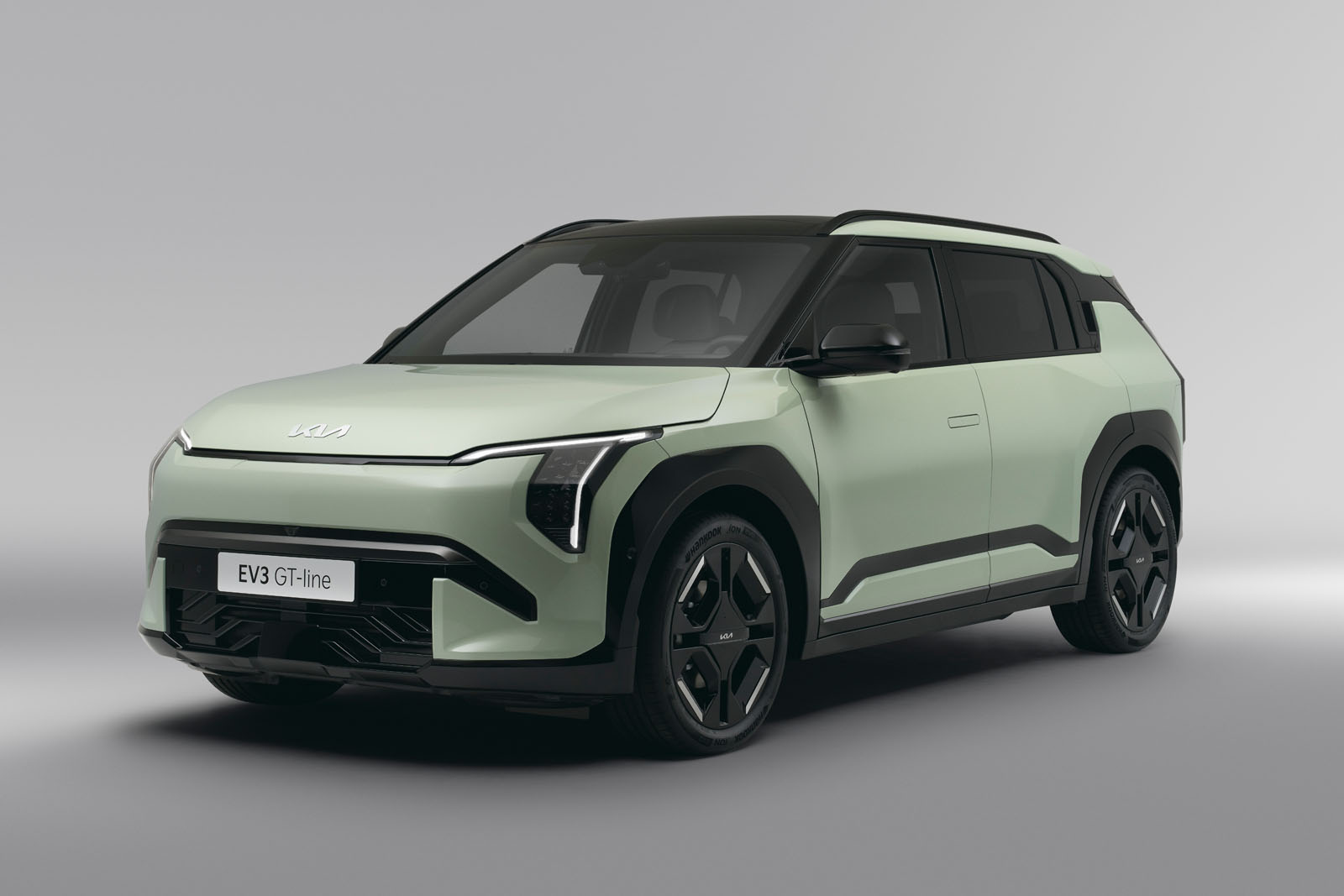The interior also features a number of storage areas, including a central unit between the front seats with a sliding table that can be used as a workspace. The boot has a capacity of 460 litres and there is also a 25-litre ‘frunk’. Both the interior trim and boot make use of sustainable materials, including recycled fabric and recycled PET in the seats, headliner, armrests and floor mats. A QR code on the EV3’s dashboard and interior bodywork gives more information on the material used.
The EV3 will initially be offered with a single electric motor producing 201bhp – matching the Niro EV – but with a choice of two nickel-cobalt-manganese (NCM) batteries. Standard Range models will feature a 58.3kWh unit, giving a range of around 255 miles, while Long Range cars will gain an 81.4kWh version, which officially yields a range of 373 miles. That is substantially more than most key rivals. For example, the leggiest Volkswagen ID 3 has an official range of 339 miles.
The EV3 uses a modified version of the Hyundai Motor Group E-GMP platform used by the EV6 and EV9, although because it has a 400V architecture, it can’t charge as fast as those cars. Instead, standard versions can charge at 102kW, rising to 128kW for Long Range models. But it will be capable of bi-directional charging and feature a vehicle-to-load power outlet in the rear.
The EV3 will be launched first in Korea, but is set to arrive in the UK and mainland Europe later this year. While it will be available initially in Standard and Long Range forms, more variants are planned, including a performance-honed GT model.

Robert Johnson is a UK-based business writer specializing in finance and entrepreneurship. With an eye for market trends and a keen interest in the corporate world, he offers readers valuable insights into business developments.








